How One Man Used a Deck of Cards to Make Parapsychology a Science
Dr. Joseph Rhine believed that psychic powers could be studied—and that he had the tools to do it.
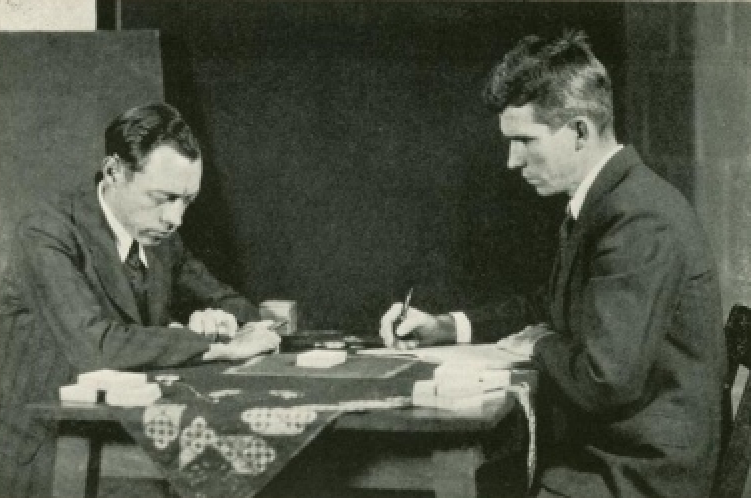
In terms of visual design, the cards are simple: Five different shapes—a five-pointed star, a circle, a square, a cross, and three wavy lines—printed in black on a white background, with an abstract blue pattern on the back like you’d find on a regular deck of cards. But what the cards are designed to do is a bit more complicated. They’re intended to test something that half of Americans believe in and most of the scientific community says doesn’t exist at all: extrasensory perception, or ESP.
Since the 1930s, Zener cards, also known as ESP cards, have been used to quantify psychic ability, testing for telepathy and clairvoyance (you might remember them from that scene in 1984’s Ghostbusters, when Venkman tests the “effects of negative reinforcement on ESP”). The cards straddle the intersection of science and the paranormal, pseudoscience and legitimacy. In a lot of ways, that’s a space also occupied by the man who pioneered their use, Dr. Joseph B. Rhine, founder of the Duke Parapsychology Lab.
Rhine’s interest in the paranormal took hold in 1922, when he was a young plant physiologist earning a Ph.D. in botany at the University of Chicago. Rhine and his wife Louisa were both dedicated scientists, but they had questions that simple biological reductionism didn’t seem to answer; Rhine had once thought of joining the ministry, until his wife steered him towards science. And then, in May of that year, they sat in the audience to hear Sir Arthur Conan Doyle make his case for life after death.
Doyle, best known for creating hyper-rational detective Sherlock Holmes, had been an avowed Spiritualist since 1916; he believed that spirit communication via mediums could offer scientific proof of a spiritual beyond. His 1922 lecture tour of America was a kind of Spiritualist mission, spreading the good news that the veil separating the bereaved living from the beloved dead was thin and easily broached by psychic perception. This message resonated with an American public still aching from the devastations of the Great War.
“I stand but ankle deep in a vast ocean of psychic knowledge, but even if I am only ankle deep, I can perhaps bring some message to those who stand dry shod on the shores,” Doyle told an enraptured audience, according to a contemporary Associated Press report. “This mere possibility was the most exhilarating thought I had had in years,” Joseph Rhine reportedly wrote later.
It wasn’t Spiritualism itself that attracted the Rhines, but rather the idea that science could examine the kinds of answers Spiritualism offered. “Both of my parents as a couple were searching for answers to the Big Questions of Life, perhaps typical of their era, when encountering scientific thinking in college disrupted the religious beliefs of their youth,” Dr. Sally Rhine Feather, the Rhines’ oldest daughter and herself a clinical psychologist, told me by email. Feather described her parents as “serious young people from fairly simple farm backgrounds in the Midwest,” each of them the first in their families to pursue any advanced education. Science had replaced religion for them, but it wasn’t enough. They wanted to use science to study the kinds of experiences that had, until recently, been the province of religion alone.
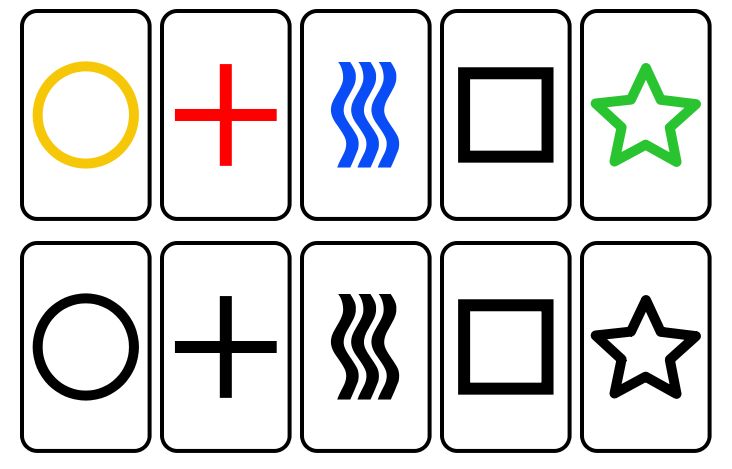
After graduating in 1925, Rhine took a job teaching botany at West Virginia University, but his true passion remained with these big questions. He and Louisa soon “began extracurricular study of psychical research material,” Feather said. In 1926, the opportunity arose to study under Dr. William McDougall, a psychologist interested in what was then called “psychical research,” during his sabbatical from Harvard University. Rhine and Louisa leapt at it: They resigned their teaching positions, sold all of their furniture, and moved to Boston.
“They decided to just abandon careers in plant physiology to see if they could find scientific evidence for the afterlife,” said Feather. One of the first places they looked was in the dark, stuffy parlor room of Mina Crandon, a prominent medium who often performed séances clad in only a dressing gown and stockings. The Rhines found her performance risible. As Stacy Horn recounted in her fascinating book, Unbelievable: Investigations into Ghosts, Poltergeists, Telepathy, and Other Unseen Phenomena, from the Duke Parapsychology Laboratory, the Rhines published their account of Crandon’s fakery in 1927 in the Journal of Abnormal and Social Psychology, making “an argument that would be turned against them for the rest of their lives”: “If we can never know to a relative certainty that there was no trickery possible, no inconsistencies present, and no normal action occurring, we can never have a science and never really know anything about psychic phenomena.”
What Rhine wanted was proof—verifiable, scientific, replicable proof. But this put him in a kind of no man’s land. He was too skeptical to be a glassy-eyed believer, willing to mistake goose fat-covered cheesecloth for ectoplasm, but not so skeptical that he dismissed the entire possibility of psychic phenomena. At the same time, religion had no use for his work and may even have seen it as a threat; Horn noted that if Rhine’s work was successful, it might offer up alternative explanations for phenomena previously considered miraculous. “If you look at it, both sides were rooting against him,” she said in a recent phone conversation.
What Rhine did have going for him, however, was sheer force of character. Passionate about his research, led by his understanding of scientific method, and supported by his wife and partner who believed in his work just as strongly as he did, Rhine was ideally suited to drag psychic phenomenon away from the tipping tables and Ouija board and into the world of science.
In 1927, McDougall, Rhine’s mentor in psychology and psychical research, moved to Duke University; the Rhines soon followed. Rhine taught psychology as an instructor, but the bulk of their work in the first few months was devoted to analyzing the copious records of a man called John Thomas, who had compiled 750 pages of notes on conversations he had with his late wife via spirit mediums. Rhine satisfied himself that the mediums referred to information about Thomas and his wife that they could not have accessed through conventional means. But, he noted, that didn’t mean the information was actually coming from the deceased – it could just as easily be coming from Thomas’s mind.
This, to Rhine, was a much more plausible avenue for research: the ability of the human mind to gain information outside of basic limiting principles such as time, space, and physics. These abilities, which he was convinced existed, he termed “extra-sensory perception.” He did that, he wrote at the time, “in order to make it sound as normal as may be.”
Rhine abandoned the search for proof of survival after death and instead began to focus on ESP. His first efforts at testing telepathy were informal: He used a numbered card or a normal playing card to see whether subjects—regular people, usually students, and not mediums or people who had built a reputation as being psychic—could guess the card without seeing it. What he found, however, was that people tended to have favorite cards, and would suggest those rather than try to really guess what card was being help up. Rhine wanted an entirely new set of cards, featuring images that had no previous associations in the minds of his subjects. For this, he turned to his colleague in the psychology department, psychologist Dr. Karl Zener.
Zener, whose usual work focused on conditioned responses (think Pavlov’s dogs), selected the five simple symbols—the star, the square, the circle, three wavy lines, and the cross—because people didn’t seem to have a bias towards any one. The Zener deck came with five sets of the five symbols, meaning that the chances of guessing the first card correctly was one in five, but the chances of making 10 or more correct guesses in a run of 25 cards was about one in 20.
“Nothing magical about the method, but it was simple, could hold attention, subject to evaluation, etc.—a paradigm for how ESP could be tested,” explained Feather. Feather, who was born in 1930, grew up at Duke with her father’s work. She remembers her mother using the Zener cards to test neighborhood children around the kitchen table in their Durham home.
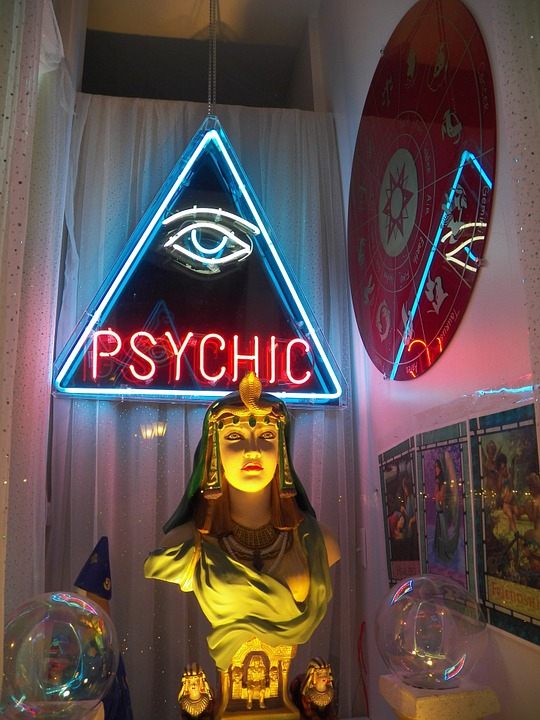
The tests were fun and popular with the Duke students, so they had no shortage of subjects; in 1931 alone, Rhine conducted 10,000 ESP tests with 63 students, many of whom he found scored better than chance. Some scored so well above chance so as to be statistically significant, including Duke divinity graduate student Hubert Pearce—who once made 25 consecutive correct guesses, a full run of the Zener deck. Meanwhile, Rhine had begun to gather a team of graduates and undergraduates who were intrigued by his work. Feather recalled a palpable energy among the new parapsychology researchers; when they got a remarkable result “they’d be running in and out and jumping up and down… They were just excited about what they were doing.”
In May 1934, Rhine published Extra-sensory Perception, a book analyzing his by then 90,000 ESP trials. According to his 1981 obituary in the American Journal of Psychology, the book created “both a popular and professional stir. The popular reaction was largely uncritical and approving; the professional one was the opposite.” By the following year, Rhine’s work saw a massive boost when a wealthy patron gave him and his lab $10,000 a year for two years, with the possibility of extending that to $10,000 a year for five years if all went well. With the money, Rhine set up his own lab, still under the Duke auspices but separate from the psychology department. Thanks to his donor, the lab the most well-funded in the university—his budget was one-tenth of the entire Duke budget, Horn reported in her book.
That Rhine was able to conduct this kind of research, and be so well supported in it, had a lot to do with when and where he was doing it. For one thing, Duke was a new university and was, as Feather suggested, more open to exploring new, unestablished science. And secondly, though most contemporary scientists were not interested in Rhine’s research, some big names were. People like William James, Thomas Edison, and Sigmund Freud all entertained some degree of fascination with the paranormal, although some were less open about it than others.
Einstein’s discoveries, Horn noted, had cracked open a realm of unseen possibilities and scientists at this time were less closed to explanations that seem to defy basic limiting principles and established physical laws. Most of mainstream science was still hostile to the study of parapsychology—Horn described much of Rhine’s correspondence from other scientists as “vicious and nasty.” But in some ways, the scientific community had never been more open to the idea that Rhine’s research could be valuable.
Meanwhile, the general public’s appetite for ESP research was seemingly limitless. By 1937, you could buy Zener cards from the local newsstand for 10 cents a pack. Rhine’s new book New Frontiers of the Mind was chosen as a Book of the Month Club selection, ESP experiments became the subject of radio shows, and everyone wanted to talk about telepathy. “The average American was more open to his results than the average scientist,” Horn said.
Rhine’s reputation as the country’s preeminent parapsychologist meant that people who’d had weird, inexplicable experiences or felt that they had abilities that others did not thought of him as their champion—a scientist who was, to paraphrase Ghostbusters, ready to believe them. “Every time something strange would happen, people would write the lab. It was the only game in town—the letters are like a 30-year history of everything weird happening in America,” said Horn.
But popular acceptance and the tentative embrace of established science were not enough to cement parapsychology as an “acceptable” discipline. Despite the initial promise of the lab, and the hundreds of thousands of trials that Rhine and others believed established the validity of ESP, parapsychology still had the taint of occult. The distance between Rhine and established science grew. Zener, who spent the rest of his career at Duke as a perceptual psychologist and later became chair of the department, asked that the cards no longer be called “Zener cards,” because he no longer wanted to be associated with Rhine’s ESP research (it didn’t entirely work—though the Lab made an effort to call them “ESP cards,” the popular audience that had adopted the cards tended to stick with the original name). McDougall, Rhine’s champion and mentor, and William Preston Few, the Duke president who agreed to Rhine’s lab, had both died; the Parapsychology Lab was funded from outside sources (including the Office of Naval Research, the Army, and the Rockefeller Foundation), but its lack of support within the university still put it in jeopardy. In 1948, the Lab became a non-teaching independent unit within the University, losing its access to graduate students and further distancing itself from the school.

When Rhine retired in 1965, the lab closed. He founded a nonprofit research center, the Foundation for Research on the Nature of Man, to continue the research, and continued to be involved in ESP research until his death in 1980. The Rhine Research Center still exists, in a tidy red-brick office park in Durham; it still uses (and sells, via the website) Zener cards. Its mission remains to explore the “frontiers of consciousness and exceptional human experiences in the context of unusual and unexplained phenomena,” although there is somewhat less funding available to conduct that exploration than in the past. “In recent years, there is more work on bioenergy work, macro-PK including occasional field investigations of such, qualitative studies of case material,” Feather, who is on the Board of Directors of the Center, wrote in an email. The question that sparked Rhine’s initial interest in psi phenomena—does consciousness survive after death?—is not among the Rhine Center’s research topics: “The Rhine has enough of a job with the topics we started with,” said Feather.
Despite the Center’s continued work, it’s not clear exactly what Rhine’s legacy will be. “I think he brought legitimacy to the murky world of the paranormal by setting standards for a new experimental science,” Feather wrote in an email. “He created a standard method so that hundreds of replications were possible here and elsewhere, a standard vocabulary, a professional peer-reviewed journal (1937 to present), a graduate training program, and ultimately an international organization. He used the same techniques found in professional psychology of his day, much improved now.” His AJP obituary lauded him for establishing a middle ground between science and psi, in which real research could continue.
Horn, however, says it’s a bit more complicated. If you accept that psi ability is scientifically valid, then Rhine’s lab was never able to answer the one question it needed to: how psi abilities worked. “Without the ability to control and enhance them, which was probably the military’s interest, funding starts to dry up,” said Horn, calling the mechanism of psi the lab’s “Holy Grail.” And if you don’t accept that psi ability has any basis in science, then it’s a different picture all together: “I think he’s always a tragic figure, because for all that he did to refine the controls and analyze his results, he did not get the respect that he deserved,” Horn said.
Today, what seems most remarkable is that Rhine was able to establish a paranormal research center at all. To suggest that this research is on the fringes of the established scientific community would be an understatement: The National Science Foundation, in its surveys on public perception of science, refers to ESP and psychic ability as “pseudoscience.” The official case for the existence of “real” ESP or psi abilities is considered tenuous; attempts to replicate studies that seem to prove psi have not been consistently successful. “Parapsychology doesn’t pay well, carries a stigma, and it’s not wise for a young person to risk this as a career path,” Feather acknowledged.
But Horn, and certainly Feather and her father, might say scientists are not giving psi a fair shake. “So many [scientists] that I talked to were all, ‘This all junk science, period, end of story,’ and they actually don’t study the work,” said Horn. “I am somewhat sympathetic with that because there is a lot of junk science out there, but you’re certainly not going to win hearts and minds by belittling people… I’m skeptical, but I researched [the Rhines’] experiments and found that all the reasons that people used to discount them were not valid. I’m kind of like Rhine, ‘Okay, these are interesting effects, but we can’t explain them, but nonetheless they’re real.’ You would think you would want to find out.” With few exceptions, she said, no one she talked to in researching her book seemed interested in finding out. “That doesn’t mean anything necessarily paranormal is going on, but something is going on, why not look into it? There is so much going on in the physical world that we don’t understand, this might give us a clue.”
Still, just as it was in Rhine’s day, even if established science dismisses ESP and psi, the general public remains fascinated by it. A 2011 YouGov poll found that 48 percent of Americans believe in ESP, more than believe in ghosts or reincarnation. And, just as you could in 1937, you can buy your own pack of Zener cards, thought for considerably more than 10 cents. However much on the fringe parapsychology is, it looks like it will always have a home.

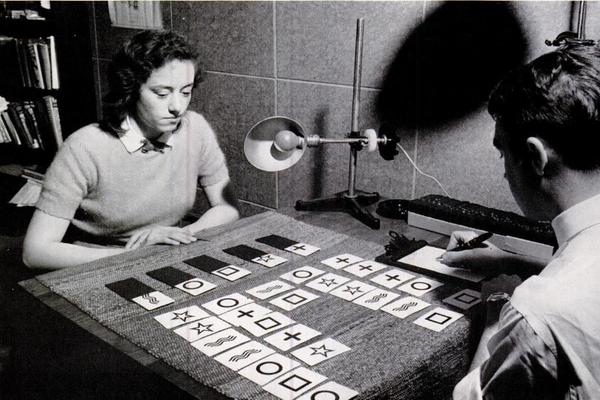


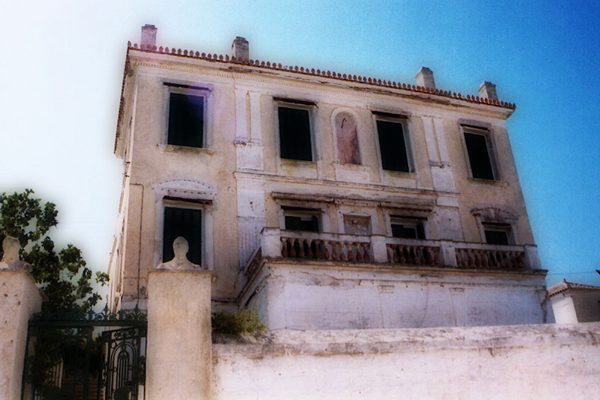













Follow us on Twitter to get the latest on the world's hidden wonders.
Like us on Facebook to get the latest on the world's hidden wonders.
Follow us on Twitter Like us on Facebook